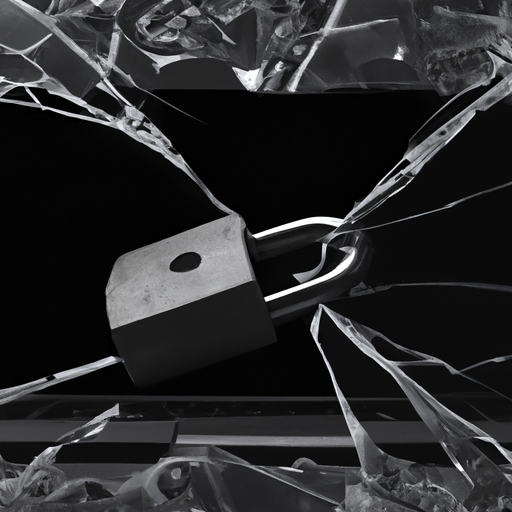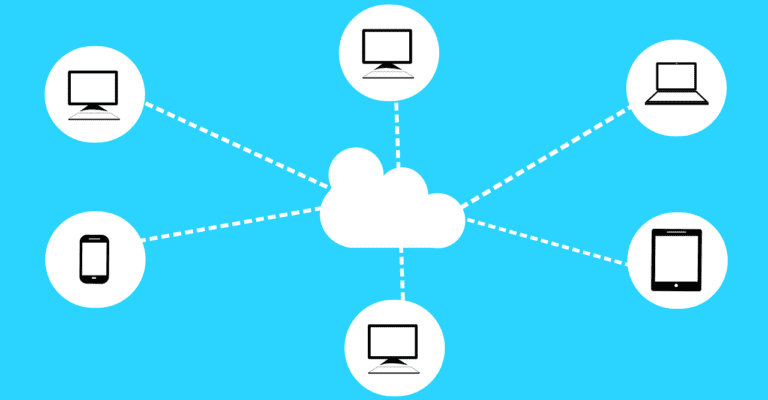How Do We Establish A Cyber Emergency Contact List?
In today’s digital age, it has become imperative to prioritize our cybersecurity. With the increasing risk of cyber threats and attacks, it is vital for individuals and organizations alike to have a well-established cyber emergency contact list. This list serves as a lifeline during times of crisis, enabling prompt and efficient communication with the right authorities and experts in the field. By taking the necessary steps to create and maintain such a list, you can ensure that you are well-equipped to handle any cyber emergency that comes your way.
1. Importance of a Cyber Emergency Contact List
1.1 Protecting Personal and Financial Information
In today’s digital age, protecting personal and financial information is crucial. Cyberattacks can target individuals and organizations, resulting in the theft of sensitive data such as credit card details, social security numbers, and personal addresses. By having a cyber emergency contact list, you can effectively respond to these threats and mitigate the potential damage to your personal and financial information.
1.2 Strengthening Cybersecurity Measures
A cyber emergency contact list plays a vital role in strengthening cybersecurity measures. It provides a centralized resource that contains contact information for key stakeholders who can promptly address cybersecurity incidents. By having this list readily available, you can ensure that the right people are informed during critical situations, allowing for quick action to minimize the impact and prevent further damage.
1.3 Rapid Response to Cyberattacks
No one is immune to cyberattacks, and time is of the essence when it comes to responding to such incidents. Having a cyber emergency contact list helps facilitate rapid response by providing immediate access to the individuals responsible for handling cyber threats. With clear communication channels established, the necessary steps can be taken promptly to contain the incident, investigate the breach, and restore normalcy to affected systems.
2. Identifying Key Stakeholders for the Contact List
2.1 Internal Stakeholders
Internal stakeholders are crucial members of your organization who should be included in the cyber emergency contact list. This may include the Chief Information Officer (CIO), Chief Information Security Officer (CISO), IT department personnel, and representatives from legal, public relations, and human resources departments. Each of these individuals holds specific responsibilities in cybersecurity incident response and should be easily reachable during emergencies.
2.2 External Stakeholders
Beyond internal stakeholders, it is equally important to include external stakeholders in your cyber emergency contact list. This could involve contacts with your internet service provider (ISP), cybersecurity consultants, law enforcement agencies, cybersecurity incident response firms, and legal counsel specializing in cyber incidents. These external contacts bring specialized knowledge and resources that can assist in effectively managing and mitigating cyber threats.
3. Creating the Cyber Emergency Contact List
3.1 Assessing Existing Contacts
The first step in creating a cyber emergency contact list is to assess your existing contacts. Identify individuals within your organization who already have key roles in cybersecurity incident response or have direct involvement in safeguarding critical infrastructure. Review their contact information, including phone numbers, email addresses, and any alternate means of communication to ensure accuracy and completeness.
3.2 Gathering Relevant Contact Information
Once you have assessed the existing contacts, it is essential to gather relevant contact information for each stakeholder. Ensure that you have up-to-date phone numbers, email addresses, and other forms of communication applicable to each individual. Consider including personal cell phone numbers for critical personnel, as incidents can occur outside of regular working hours or when individuals are away from their desks.
3.3 Categorizing Contacts
To enhance the organization and accessibility of your cyber emergency contact list, categorize the contacts based on their roles or responsibilities. For example, you can have categories such as “IT Department,” “Legal Counsel,” “Public Relations,” and “Law Enforcement.” This categorization ensures that you can quickly identify and reach out to the right individuals based on the nature of the incident.
3.4 Updating the List Regularly
Maintaining an up-to-date cyber emergency contact list is crucial for its effectiveness. Establish protocols to regularly review and update the list, especially when there are personnel changes or any modifications in contact information. Conduct periodic checks to ensure accuracy, and make it a part of your organization’s cybersecurity governance to verify and update the contact list at predefined intervals.
4. Establishing Effective Communication Channels
4.1 Utilizing Multiple Communication Methods
During a cyber emergency, it is essential to have multiple communication methods in place to ensure that messages reach the intended recipients. Relying solely on email or phone calls may not be sufficient, especially if systems are compromised. Consider using alternative communication channels like secure messaging apps, instant messaging platforms, or emergency notification systems capable of sending mass alerts to all stakeholders simultaneously.
4.2 Encouraging Two-Way Communication
Effective communication is a two-way process. Encourage all stakeholders to actively participate in the communication process by providing updates, sharing critical information, and asking relevant questions. Establish a culture that fosters open dialogue and transparency, allowing individuals to feel comfortable reporting incidents and sharing pertinent details that can aid in incident response and resolution.
4.3 Designating Communication Protocols and Responsibilities
To streamline communication and avoid confusion, establish clear communication protocols and assign responsibilities to key individuals within your cyber emergency contact list. Determine who will act as the primary communication point of contact and define backup roles for redundancy. Ensure that all stakeholders are aware of their roles and responsibilities and the communication channels to be used during different types of cyber incidents.
5. Training and Awareness Programs
5.1 Educating Employees on Cybersecurity
To ensure the effectiveness of your cyber emergency contact list, it is crucial to educate all employees on cybersecurity best practices and incident response protocols. Conduct regular training sessions to create awareness about potential cyber threats, the importance of reporting incidents promptly, and the correct utilization of the contact list. Empower employees with the knowledge and skills to identify and respond to cybersecurity incidents effectively.
5.2 Conducting Regular Drills and Simulations
In addition to training programs, conduct regular cybersecurity drills and simulations to test the responsiveness of your cyber emergency contact list. Simulate various cyberattack scenarios to evaluate how well stakeholders respond, communicate, and collaborate. These exercises allow you to identify any gaps or weaknesses in your incident response processes and make necessary adjustments to improve overall preparedness.
5.3 Promoting the Importance of the Contact List
Continuously reinforce the importance of the cyber emergency contact list throughout your organization. Emphasize that the contact list is a critical resource that can significantly impact incident response effectiveness. Encourage employees to refer to the list when needed and provide feedback on any updates or changes that may be required. Regularly remind employees of the potential consequences of not utilizing the contact list during cyber emergencies.
6. Ensuring Compliance and Legal Considerations
6.1 Aligning with Industry Standards and Regulations
When establishing a cyber emergency contact list, it is imperative to consider industry standards and regulations applicable to your organization. Different sectors may have specific requirements, such as data protection and disclosure obligations. Ensure that the contact list aligns with these standards and regulations to mitigate any legal risks and potential liabilities.
6.2 Protecting Data Privacy and Confidentiality
As the cyber emergency contact list contains sensitive information, it is crucial to protect the data privacy and confidentiality of individuals listed. Implement measures to safeguard the contact list against unauthorized access, such as encryption and access controls. Additionally, ensure that individuals listed in the contact list are aware of their responsibilities regarding data privacy and confidentiality.
7. Collaboration and Partnerships
7.1 Engaging with External Agencies and Organizations
To enhance your cyber emergency response capabilities, establish collaborations and partnerships with external agencies and organizations. Engage with local law enforcement agencies, incident response teams, cybersecurity information sharing communities, and other industry stakeholders. By fostering these relationships, you can access additional expertise, threat intelligence, and resources that can be valuable during cyber incidents.
7.2 Sharing Best Practices and Threat Intelligence
As part of your collaboration efforts, actively share best practices and threat intelligence with your partners. By exchanging information and experiences, you can stay informed about emerging cyber threats and effective incident response strategies. Establish mechanisms for ongoing knowledge exchange, such as regular meetings, workshops, and information sharing platforms, to collectively strengthen cybersecurity preparedness.
8. Testing and Evaluating the Contact List
8.1 Conducting Regular Testing Exercises
Regularly test the effectiveness of your cyber emergency contact list through realistic testing exercises. Plan and execute simulated cyber incidents to evaluate the response capabilities and efficiency of the designated stakeholders. Assess the timeliness and accuracy of communication, as well as the overall coordination between internal and external stakeholders.
8.2 Evaluating Response and Effectiveness
Following each testing exercise or real incident, evaluate the response and effectiveness of the cyber emergency contact list. Review the strengths and weaknesses identified during the exercise, identify areas for improvement, and make the necessary adjustments to enhance the contact list’s effectiveness. Learn from each incident and use the insights gained to continually improve your incident response procedures.
9. Resources and Tools
9.1 Utilizing Cybersecurity Resources
Leverage cybersecurity resources provided by industry associations, government agencies, and reputable cybersecurity organizations. These resources often include guidelines, frameworks, and templates for developing and maintaining a cyber emergency contact list. Stay up-to-date with the latest industry practices and leverage the expertise available to ensure your contact list aligns with the current cybersecurity landscape.
9.2 Using Online Tools and Platforms
Various online tools and platforms can aid in managing and maintaining your cyber emergency contact list effectively. Consider using collaboration software, secure messaging apps, and incident management platforms that centralize communication and securely store contact information. These tools and platforms can streamline the communication process and enhance the accessibility and usability of your contact list.
10. Continual Improvement and Adaptation
10.1 Learning from Incidents and Updating the Contact List
Each incident provides valuable lessons that can drive improvements in your cyber emergency contact list. Analyze past incidents and apply the lessons learned to update and refine your contact list. Assess how the contact list could have been more effective in mitigating the impact of the incident and incorporate these insights into your ongoing improvement efforts.
10.2 Evolving with Emerging Cyber Threats
The cyber threat landscape is constantly evolving, with new cyber threats emerging frequently. Ensure that your cyber emergency contact list remains relevant by regularly assessing its alignment with emerging cyber threats. Stay informed about evolving attack vectors, mitigation strategies, and incident response best practices. Evolve your contact list to adapt to these changes and optimize its effectiveness in addressing the latest cyber threats.
In conclusion, establishing a comprehensive cyber emergency contact list is vital for protecting personal and financial information, strengthening cybersecurity measures, and enabling rapid response to cyberattacks. By following the outlined steps and continuously improving your contact list, you can enhance your organization’s preparedness to effectively respond to and mitigate the impact of cybersecurity incidents.








